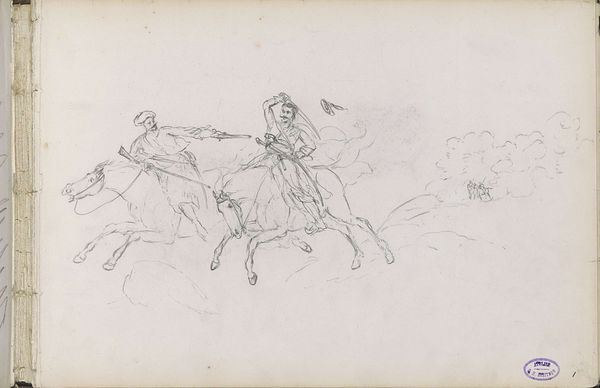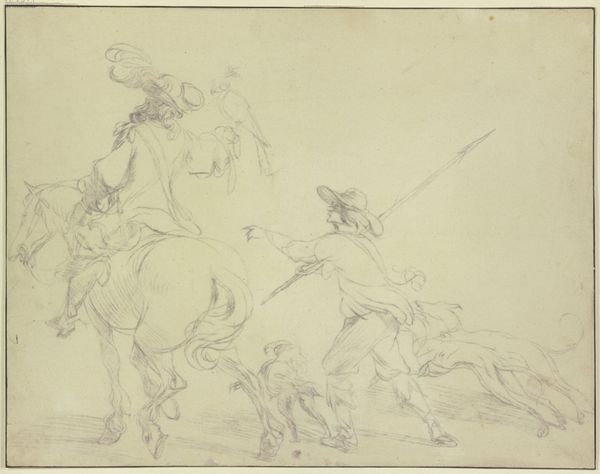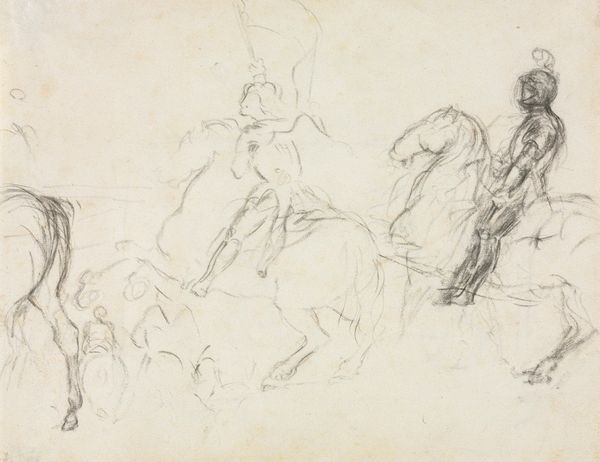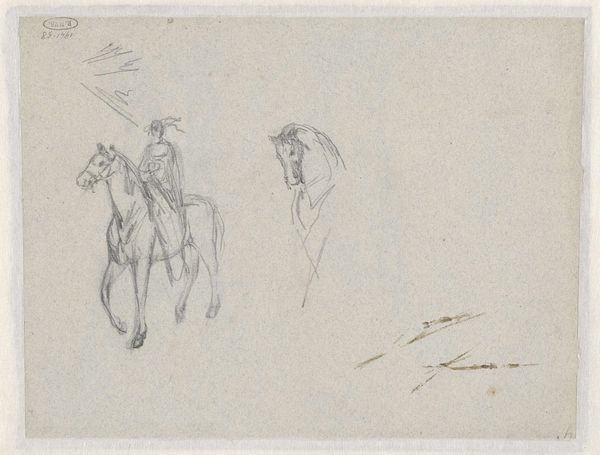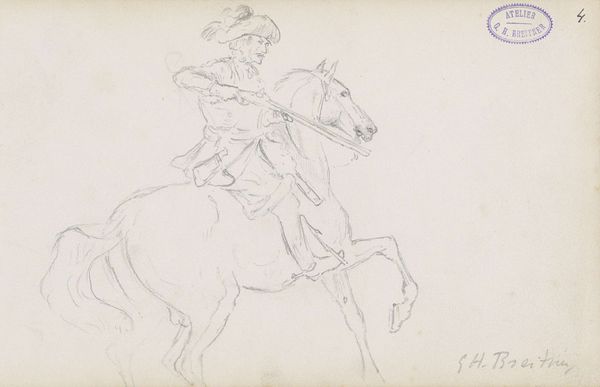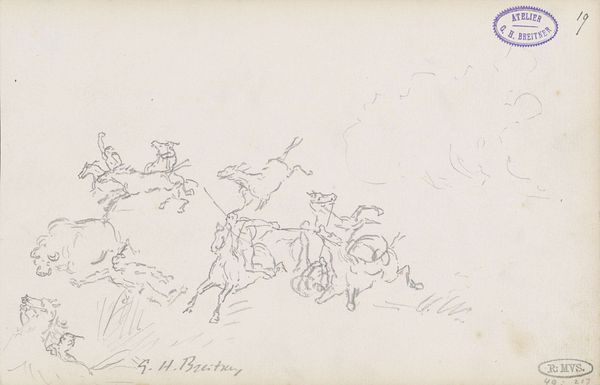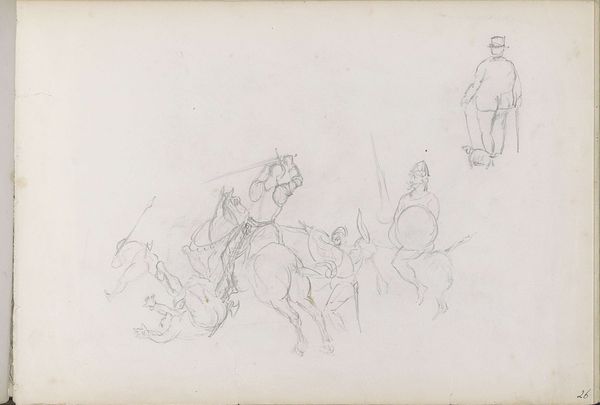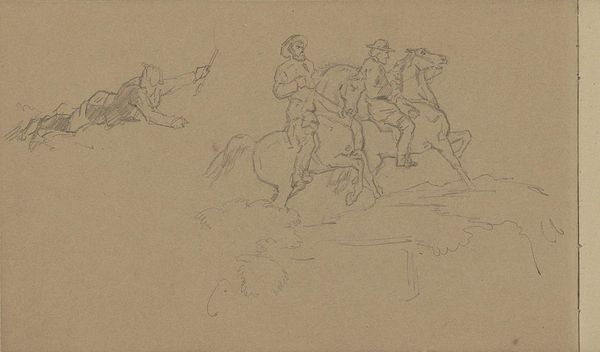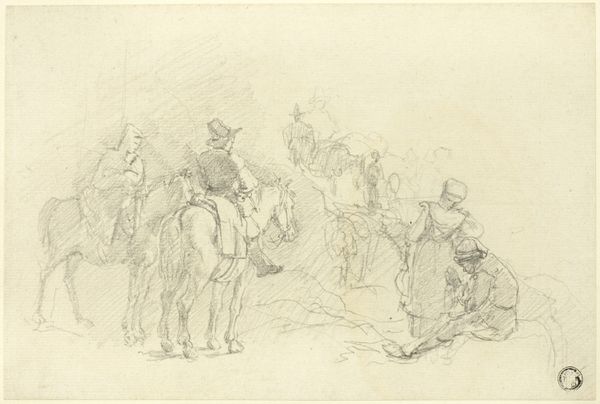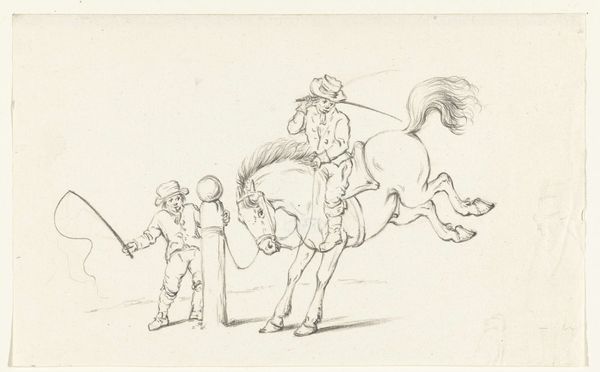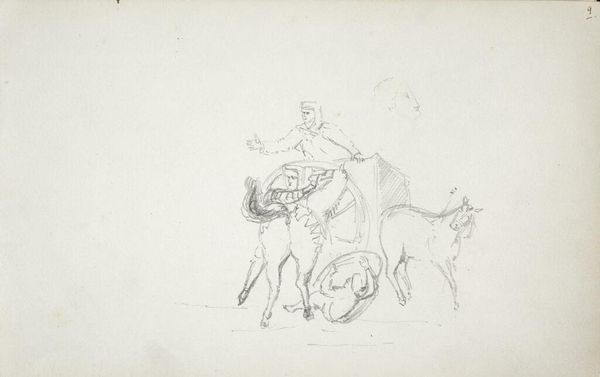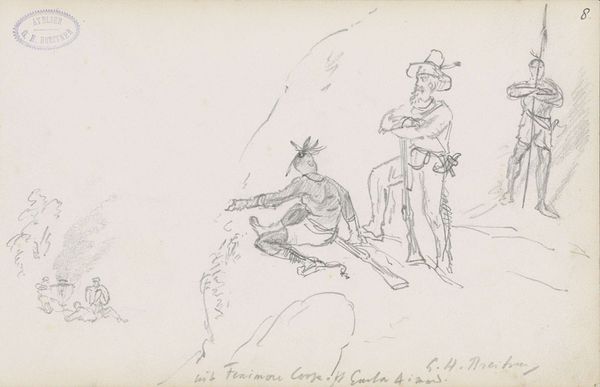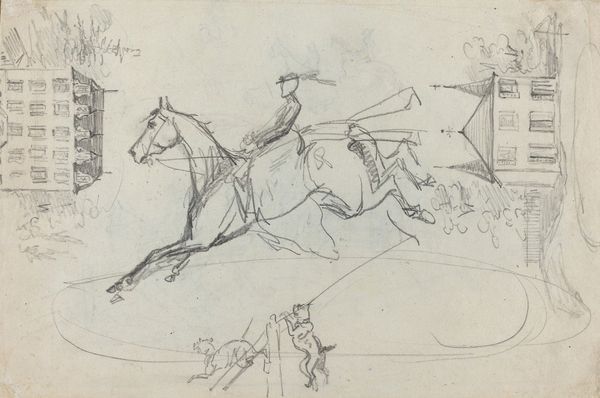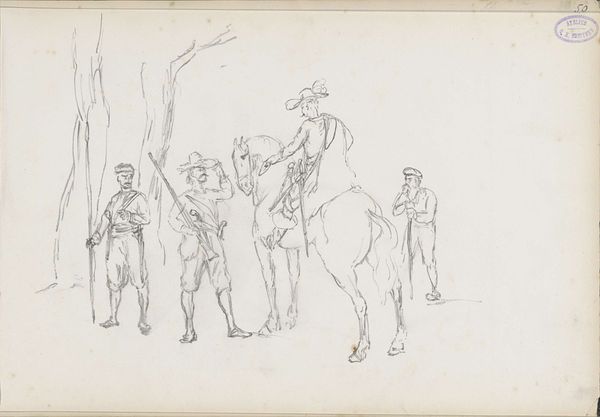
Ruiters bij figuren rond een pot aan een driepoot c. 1871 - 1876
0:00
0:00
drawing, pencil
#
drawing
#
impressionism
#
landscape
#
pencil
#
genre-painting
Dimensions: height 134 mm, width 209 mm
Copyright: Rijks Museum: Open Domain
Editor: This pencil drawing, "Ruiters bij figuren rond een pot aan een driepoot" by George Hendrik Breitner, circa 1871 to 1876, feels like a fleeting moment captured on paper. The figures are so lightly sketched, almost as if they might disappear. What's your perspective on this work? Curator: Considering the material conditions, let's look at the availability and purpose of the pencil itself. Breitner's choice of this readily accessible material suggests a focus on rapid documentation, on sketching a scene with an economy of means. It allows us to explore the socio-economic context: Who had access to paper and pencils at that time? What social class is being depicted here and what is their relationship to labor? Editor: So, you see the pencil as a key to understanding the social and economic dynamics at play? Curator: Absolutely. It's not just about artistic skill, but also about the social context of production. The swiftness of the pencil marks suggests a working method aligned with capturing everyday life, potentially for later use in paintings. How might we understand the scene being depicted through this lens of labor? What is the purpose of depicting riders next to what seems to be a camp? Editor: Maybe it is a quick record of an encampment to show labor in that context. The sketch gives a feeling of observation of ordinary working folks. Curator: Precisely. And understanding that Breitner chose this material allows us to challenge any conventional ideas separating 'high art' from everyday realities, by scrutinizing the conditions in which this image was produced, disseminated, and eventually consumed. What else catches your eye about the use of the material? Editor: I hadn’t considered the pencil in that light. Seeing it as a tool that brings out the material conditions of the work really makes me think differently. Thanks! Curator: Indeed. Considering the material history reshapes our appreciation of the artwork itself, enabling a grounded understanding of its cultural resonance.
Comments
No comments
Be the first to comment and join the conversation on the ultimate creative platform.
